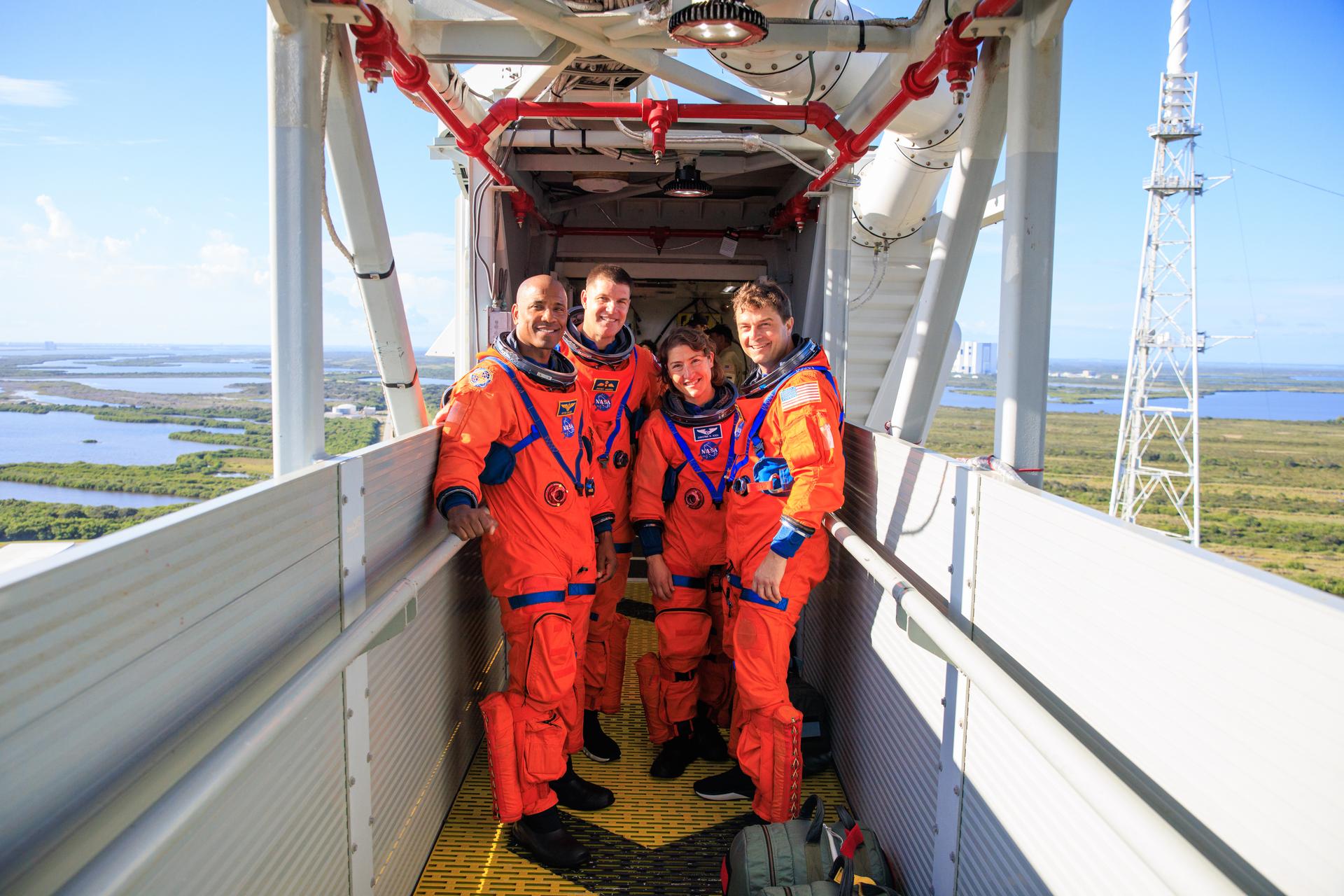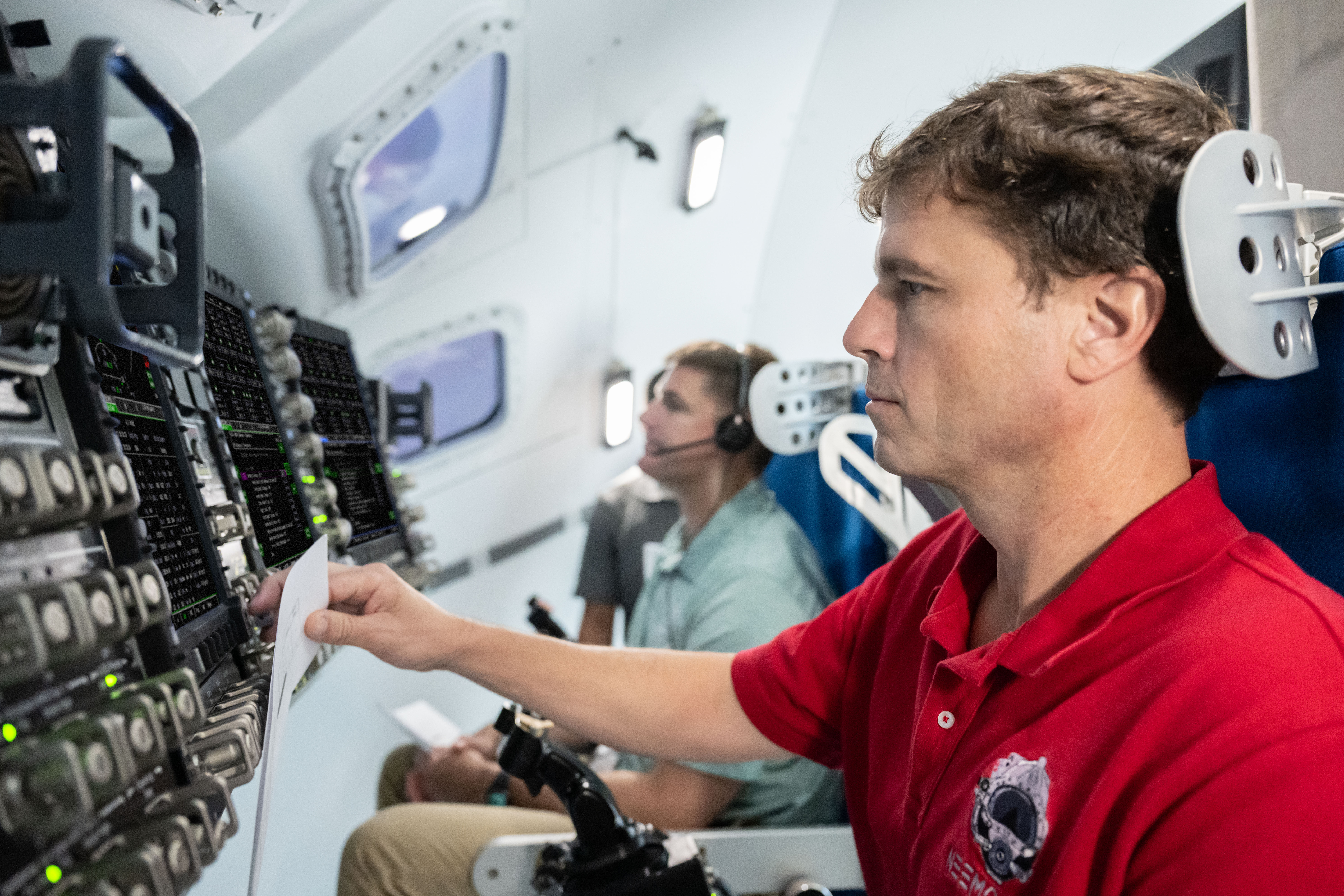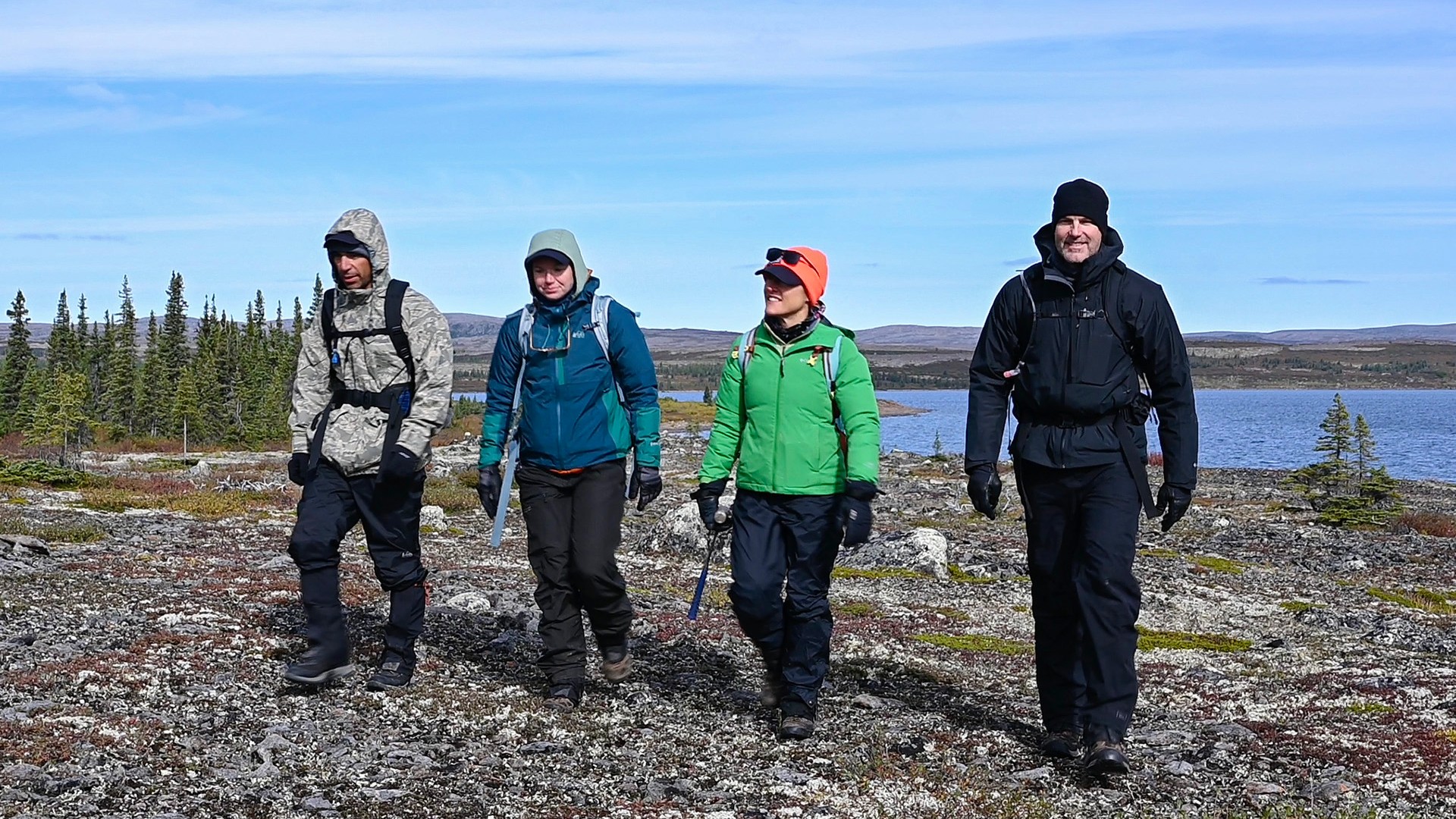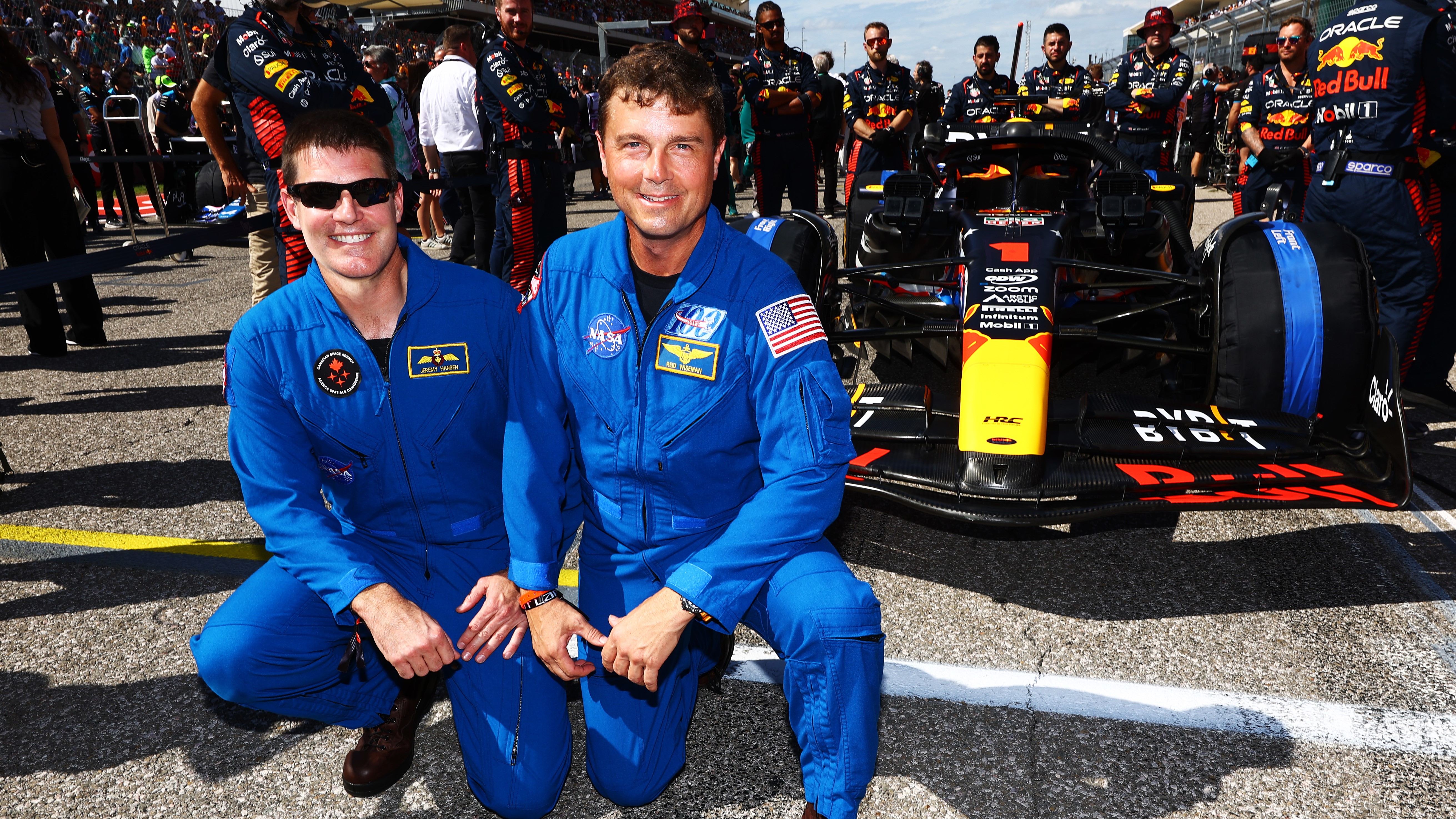Artemis 2 moon astronaut says crew is ready for ambitious 2024 mission
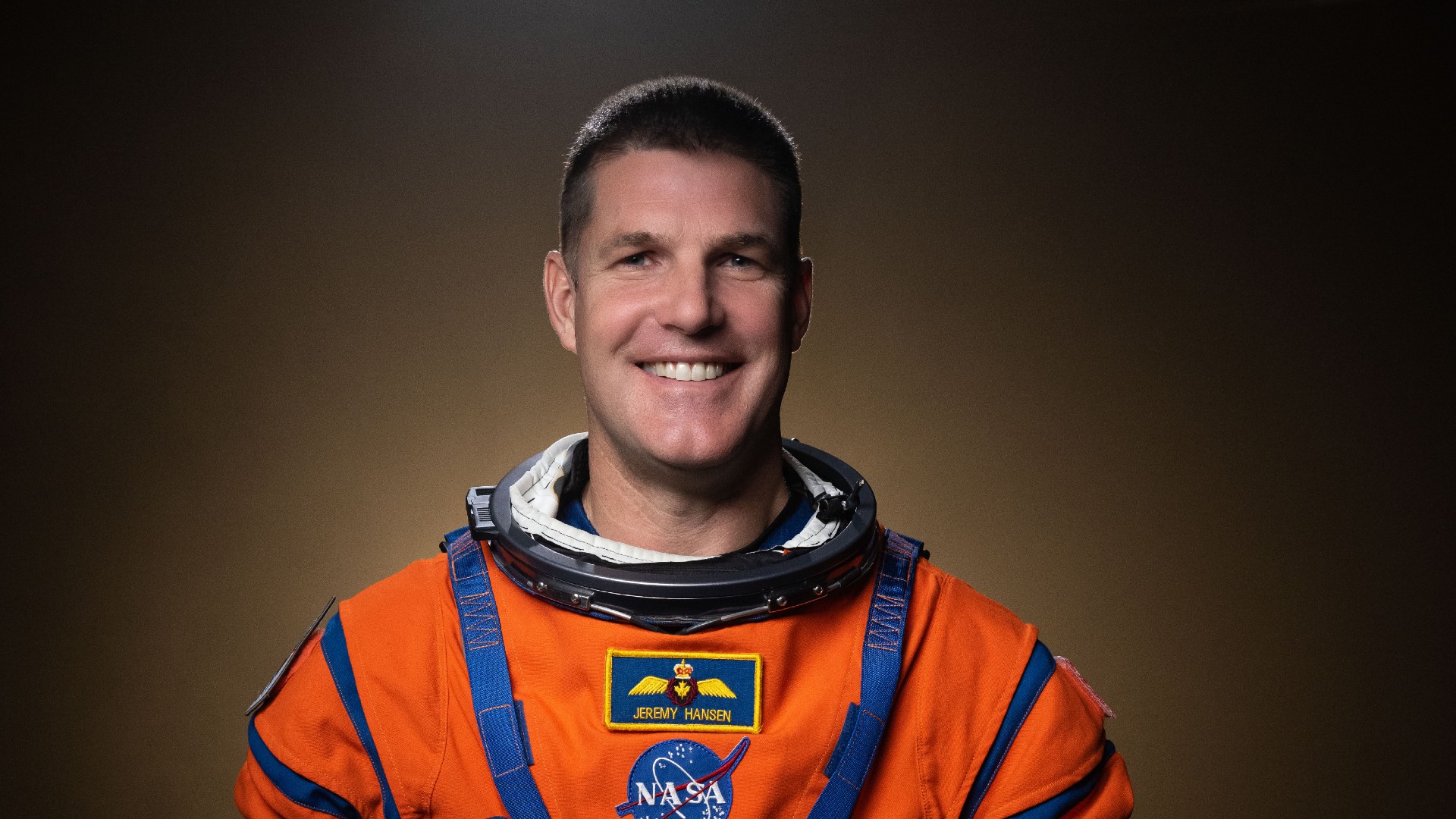
Seven months of moon mission training is bringing spaceflight "much closer than it's ever felt before," a Canadian astronaut told Space.com.
Jeremy Hansen is one of the mission specialists aboard Artemis 2, which aims to launch four people around the moon in 2024. Hansen, a Canadian Space Agency (CSA) astronaut, will make his first flight to space on a monumental effort: Artemis 2 will be the first astronaut mission to visit the moon in more than 50 years, and it will kick off human excursions for NASA's larger Artemis program.
The CSA selected Hansen in 2009, but he had to wait a while for a flight because Canada's contributions to space are relatively modest, though mighty, compared to other agencies; the CSA's International Space Station (ISS) robotic contributions, for example, are 2.3%. But he was assigned to numerous senior roles on the ground. Examples include advising Canadian policymakers on space affairs, mentoring and managing the training schedules for the 2017 NASA astronaut class and helping to formulate a four-spacewalk marathon of procedures to repair an ISS instrument that hunts for signs of dark matter.
With all this experience behind him, Hansen said that finally donning a spacesuit for a mission is more a continuation of what he had been doing before — a long journey of helping other astronauts, while highlighting Canada's contributions in space.
"The only thing that does feel different is that there is this personal aspect of, 'I've been working to actually fly in space and do the astronaut aspects'," Hansen told Space.com in an exclusive 30-minute interview on Friday (Oct. 27.) "It does feel like it's getting closer, and much closer, than it's ever felt before. So there is that sense, and that is really fun for me."
Related: Artemis 2 astronaut Jeremy Hansen says a Canadian will walk on the moon one day
Hansen will fly around the moon alongside three NASA astronauts (commander Reid Wiseman, pilot Victor Glover and mission specialist Christina Koch) on a flight meant to highlight international collaboration and diversity. Hansen will be the first non-American to leave Earth orbit, thanks to CSA's contribution of Canadarm3, which is being built by the Canadian company MDA. The robotic arm will service NASA's future Gateway space station sometime in the coming decade, if all goes to plan.
Breaking space news, the latest updates on rocket launches, skywatching events and more!
Artemis 2, Hansen emphasized, is "very much a testing mission" in which the astronauts are all bringing their skills to figure out the best road forward to the moon. The astronauts all know each other well and have gelled as a crew, Hansen said. Where possible, even in airports or at stops in between training locations, the crew's conversations focus on aspects such as managing risk and how to implement teamwork while working through those risks.
The NASA astronauts have all flown on the ISS before, and each one has unique skills to offer. Koch, who will become the first woman to go to the moon, is an Antarctic scientist by training and spent nearly a year on the ISS. Glover, a U.S. Navy Captain and former U.S. Senate fellow, was the first Black astronaut on a long-duration ISS mission — and will be the first to leave Earth orbit as well. Wiseman, who used to fly carrier missions for the U.S. Navy, will command the quartet.
"We're just creating the training, trying to figure out what we need with the team," Hansen said. "That's really fun. That's a unique thing; I'll probably never experience that again."
Related: Artemis 2's Canadian astronaut got their moon mission seat with 'potato salad'
A simulator of Artemis 2's Orion capsule is one example of the evolving training procedures. When recent pictures emerged of the Artemis 2 crew testing out the hardware at NASA's Johnson Space Center in Houston, Hansen said the impression may have been that all was completed. While the sim is helpful, more capabilities will come; Hansen, like his Artemis 2 crewmates, is a military pilot with thousands of hours of experience to offer in that process.
"Our simulator is very, very limited, but we can get in it and go through some early procedures to the cruise phase of flight," Hansen said. "We're able to work through turning off systems, resetting systems and seeing failures in certain systems … we go in there two (astronauts) at a time and just work through these different simulation profiles."
Another exercise took place in September, when the entire Artemis 2 crew suited up for a launch day, complete with a visit to the launch tower and a walk across the gantry to where NASA's Space Launch System (SLS) rocket will be waiting one day to take the astronauts off Earth. (Artemis 2's SLS and Orionare still under construction and weren't available at that time.)
Hansen said the opportunity provided valuable practice for the crew and for all the ground teams to bring simulations off the tabletop and into the launching area. They are learning things like how much time they need to allocate for checklist items, what spare items might be needed on site, who carries what to the rocket, and similar questions.
While Hansen and the team were focused on training during the launch simulation, he also took a moment to think about what it will be like when Artemis 2's SLS is fueled and ready for the moon crew. "It's going to be moaning and groaning, I suspect. It's going to be venting. It won't be sitting there quietly; no, I imagine it'd be talking to us," he said.
"The other thought I had was, This is a really beautiful place to leave the planet," Hansen added, referring to NASA's Kennedy Space Center, on Florida's Space Coast. "You're right on the beach. You see the ocean lapping against the shore, as you're climbing into this huge rocket. It's going to take you all the way to the moon. It's just a really surreal sort of picture to imagine."
Related: Artemis 2 astronaut crew suits up for moon launch dress rehearsal (photos, video)
Geology training also occupied some of Hansen's time in recent months, alongside Koch. In September, the Artemis 2 astronauts joined two astronauts from the 2017 class — NASA's Raja Chari (who flew with ISS Expedition 66/67) and CSA's Jenni Sidey-Gibbons (not yet assigned to a mission) — on an expedition to Kamestastin (also known as Mistastin) in northern Labrador. The crater is just one of 31 known to be formed by meteorites in Canada, according to CSA documentation.
The site is rich in anorthosite, a rock common near the moon's south pole where future Artemis missions will land, as soon as with Artemis 3 in 2025 or 2026. The remote expedition, under the leadership of crater expert and planetary geologist Gordon Osinski from Western University in Ontario, was meant to hone the astronauts' geology skills. The excursion also allowed the team to practice "expeditionary training," or working in teams in remote environments. Sidey-Gibbons, for example, is "one of the most skilled expeditionary skills teachers we have" in the Astronaut Office at JSC , Hansen said.
The learnings the team gathered in Labrador will be useful for the astronaut group, Hansen said, especially as the corps already dedicates one day every month to "core culture," to build people skills. The discussions include "open conversations" on matters such as training debriefings, about how people are feeling and what they are learning, he said.
Collaboration with the locals in the field was also key to the geology expedition, Hansen emphasized; the Mushuau Innu First Nation in what is today called Labrador holds the crater as a sacred location. Given that scientists also find the crater's environment valuable due to the anorthosite and the rich geology, the overlap between the "spirituality and science," in Hansen's words, was "unique and special and powerful."
"There's this energy; they are very much on the path to humanity returning to the moon and understanding the moon in a new way," he said of the elders, guardians and community members he met from the Mushuau Innu. "It was neat that that resonated with them, that they will be part of this trip to the moon."
Related: See Artemis 2 astronauts explore moon-like crater in Canada (photos)
The training has been diverse as well. The crew is learning how to use the five cameras on board the Orion spacecraft to take pictures of the moon and of Earth, as well as recording their activities for "downlinks" to Mission Control. Medical training is emphasizing how to work with fewer resources than are available on the relatively roomy ISS; the astronauts recently spent time in a hospital cadaver lab and emergency room to learn how to take care of wounds, to stitch, to do ultrasounds and catheters, and other routine medical procedures that might be required on their mission.
While most of Hansen's time is occupied with training now, he and the other astronauts periodically go on tours to raise awareness about Artemis 2 with different audiences, and to glean insights from companies that may have expertise. Hansen and Wiseman, for example, spent time in the pit this month with the McLaren F1 crew at the Grand Prix of the United States in Austin, Texas.
Hansen said that, during a race, McLaren's crew has the equivalent of a mission "capcom" ("capsule communicator") talking to the driver, and another individual like a flight director who feeds information to the capcom based on feedback from racing engineers. Sometimes the team needs to make a decision in two or three seconds, similar to the situation in spaceflight, and those decisions are debriefed in a "lessons learned" exercise. Hansen added that Artemis teams hope that theMcLaren crew can visit Mission Control in Houston "to see what else they could glean" from spaceflight procedures.
The interview with Space.com took place while Hansen was in Toronto publicizing the mission via television and media appearances, alongside visits to two Canadian companies. One company, Canadensys, is providing hardware for Canada's first lunar rover mission in 2026 or so. (The science on that project will be led by Osinski.) The second, Kepler Communications, plans a "wifi in space" system, which will act as a communications relay in space for satellites to bring their data back to Earth.
Hansen said he is learning a lot from these companies' technical experts. He added that he shocked to discover that Canadensys gets about 80% of its business through exports, a figure that demonstrates the value of Canadian space technology to the international economy. He said that, where possible, he tries to emphasize Canada's role in working under United States leadership for Artemis. He talks about Canada's famous niche in robotics alongside emerging areas, like artificial intelligence or food or medical systems, in interviews like this one.
Related: Artemis 2 moon mission will lift companies, top Canadian space official says
Hansen also recalled a stop on the Toronto tour where he was listening to elementary school students. One girl rose before an audience of 600 with worries about whether young people can expect a promising future on Earth, given the rise of climate change and similar problems. Hansen said he felt "alarm bells" in his head, with somebody that young worried about the environment.
"We need to remind them [students] that you can create a better future, but you're going to have to work for it. You're going to have to focus and prioritize working together, bringing the world together, not simply bringing the world into sections. We're going to have to work together — and we're going to have to work hard to agree on things."
When asked how Hansen's support group is doing — he is married with three teenagers and has a network of family and friends in several countries helping him alongside a large group at CSA — he said the community is "very inspired by this idea of going to the moon." They are finding meaning, he said, in continuing the roles they have played for many years while Hansen has been an astronaut.
"It's very clear to everyone on the team that it takes a whole team of people to do this. No one can go do it on their own. So they feel like their work is meaningful in accomplishing the task, but also in more of that altruistic sense that I'm always pointing back to: they're doing a huge service to humanity," Hansen said.
"They're setting an example of collaboration, working together for the good of humanity. Not collaboration to tear one another down, but collaboration to solve problems that matter for our future. I think everybody feels like they're part of the winning team on this right now."

Elizabeth Howell (she/her), Ph.D., was a staff writer in the spaceflight channel between 2022 and 2024 specializing in Canadian space news. She was contributing writer for Space.com for 10 years from 2012 to 2024. Elizabeth's reporting includes multiple exclusives with the White House, leading world coverage about a lost-and-found space tomato on the International Space Station, witnessing five human spaceflight launches on two continents, flying parabolic, working inside a spacesuit, and participating in a simulated Mars mission. Her latest book, "Why Am I Taller?" (ECW Press, 2022) is co-written with astronaut Dave Williams.
